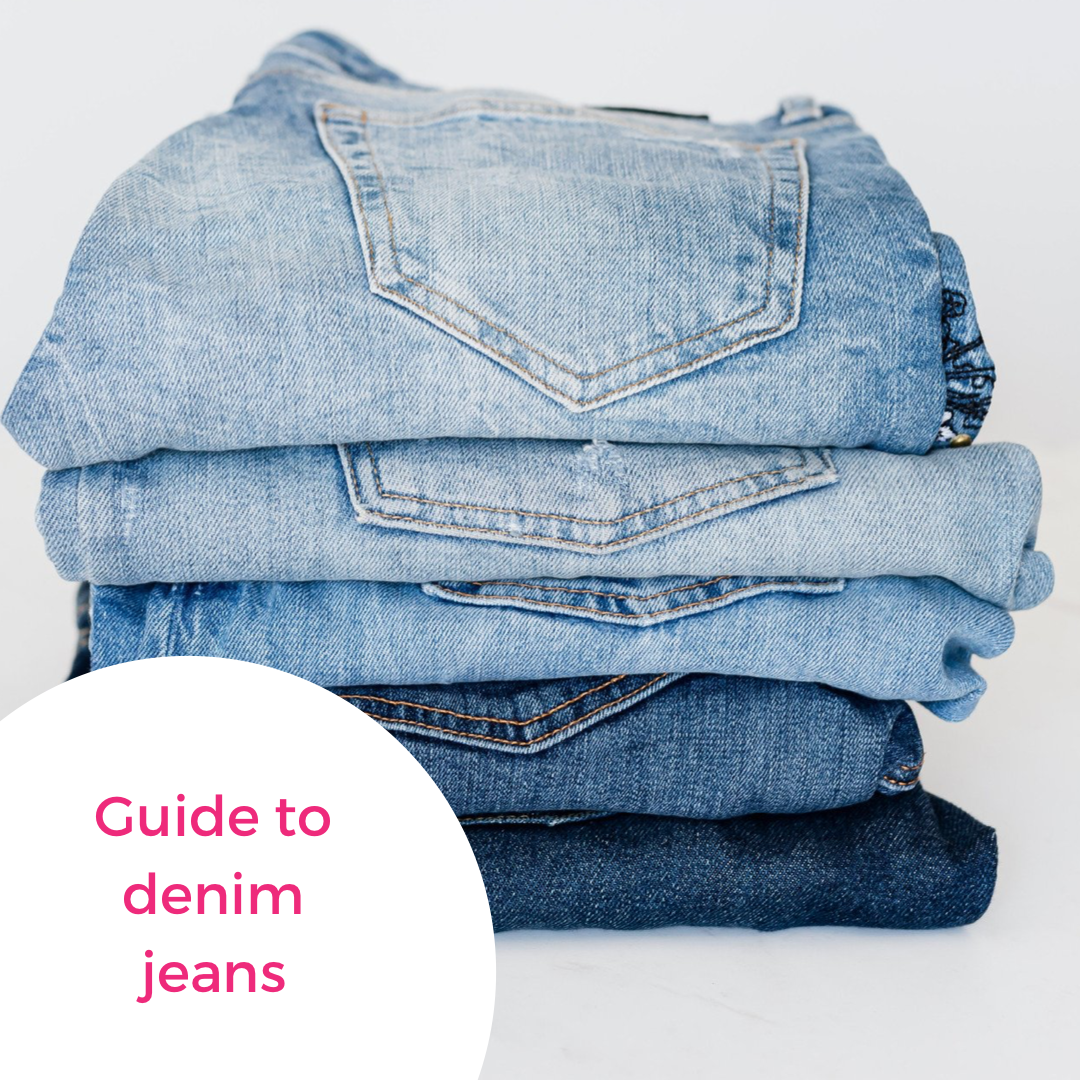If you’ve found yourself wearing more denim lately, you’re not alone!
You could argue that Jeans are the most basic of clothing items. A wardrobe staple, but they can also be difficult to get the right fit and style too.
Here’s my guide to denim.
Fit and style
Like most items of clothing, finding the right fit and style for you is a must.
We are all different after all, which is why there’s so many different styles out there. But, having choice doesn’t always make it easier to find a pair which works for you. I always say that size doesn’t matter but shape does. It’s really important to remember this, as there is no uniform guide to clothing sizes. It’s not just your waist size but also think about your inside leg length and the rise (from the waistband to the crotch).
Skinny
The skinny jean is made with stretchy denim so they have a fitted shape which stretches and finishes on the ankle. Also available in super skinny which has much more stretch and a much closer fit. Can be dressed up with heels or down with trainers.
Slim
This style can flatter the hips and thighs and they are fitted, with a straight, clean cut through leg and a looser ankle. Sits between a skinny and a straight jeans style.
Jeggings and leggings
Jeggings are leggings made of denim and are an alternative to skinny jeans as they tend to be less rigid than traditional denim jeans but more comfortable to wear. Designed with an elasticated waistband and are stretchy so they are fitted through the leg, with a skinny ankle and sewn-down pockets so they also avoid bulk at the hip. The more curvy you are, the more stretch you’ll need! Jeggings tend to have lots of stretch so give them a try as they’ll skim your curves rather than constrict them.
Bootcut
Designed to elongate the leg, fitted through the hips and thigh with a subtle kick at the knee so they are slightly wider at the ankle. Designed to fit over a pair of boots and so have extra width in the calf and ankle to accommodate the boot. If you’re more petite and want to appear taller, a boot cut or flare that skims the floor will do wonders.
Flare
Mention flares and everyone thinks of the 70s! They have a slim fit around the hips and thighs and flow into a wider hem below the knee.
Wide leg and culottes
These fit at the hips but fall down in a straight and loose style and fit. Much wider in the leg from the hips down the leg. Could be cropped in length like culottes or fall to the ankle.
Mom
Tend to be higher waisted with a slim fit through the leg. Relaxed, slouch and loose fitting. Like you borrowed them from your mum. Apparently.
Straight
A traditional style which has a simple straight cut with no stretch in the fabric. The width is the same for the length of the leg so they’ll fit more at your thighs than they do the ankle and calf.
Boyfriend
Named assuming you’d borrowed your jeans from the boys; this fit is loose and slouchy for a more relaxed style. Tend to be low rise so they sit on the hips.
Girlfriend
Another straight leg style but with a more relaxed fit. The girlfriend jeans have some stretch in them (unlike the straight styles) so they are fitted on the waist but relaxed fit in the leg.
The rise
This is the measurement from the waistband down to the crotch. Essentially, it’s how it will sit on your waist and hips. Not everyone is equal and balanced in their body proportions. Go for a rise which works for your shape and proportions so think where your waist needs to be visually in order to balance you out, if needed.
High rise or high waisted
Sits higher in your waist area. Typically, worn up to or above the belly button. If you’re long in the waist area, this style will trick you into thinking your waist is higher than it actually is. Might help you hide a tummy too. If your jeans gape at the bag, the fit and rise is too high, so try a lower rise style.
Mid rise or regular
This style sits on the belly button or slightly below.
Low rise
Will sit lower on the waist and hips and below the navel, often sitting on the hips.
Fit tips
If you happen to be conscious of your bottom and don’t like to highlight it, stay away from jeans with detailing such as contrasting yellow thread detailing the pockets. Instead look for a tonal blue or black trim. Detailing on any garment on an area you don’t want to highlight will have the opposite effect.
Pockets. Traditionally, jeans do have pockets but if you have wide hips that you wish to minimise, don’t opt for hip and coin pockets. A plain front will work so much better for you. Also check the placement of the pockets (the nearer together, the slimmer you’ll look).
If you need more help dressing your shape, why not book a style and shape session (also available online), so you can learn the tips and tricks for dressing your shape.

